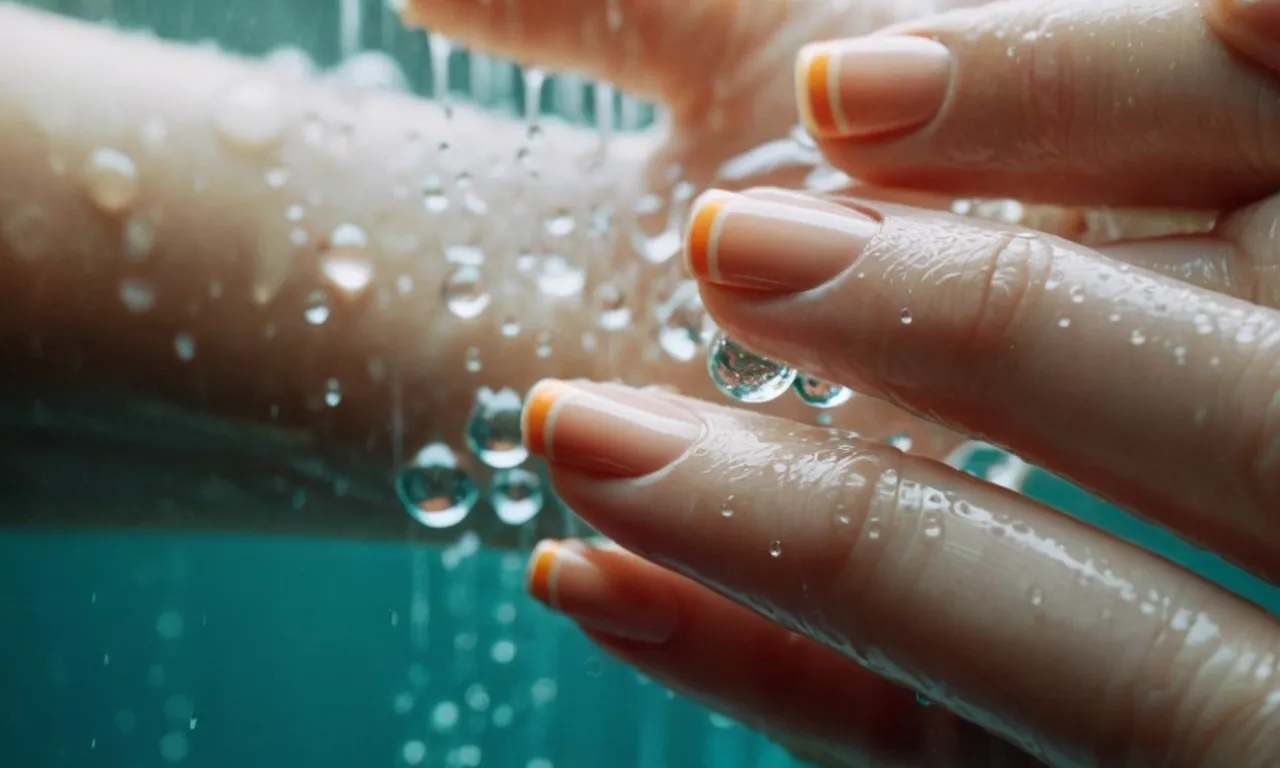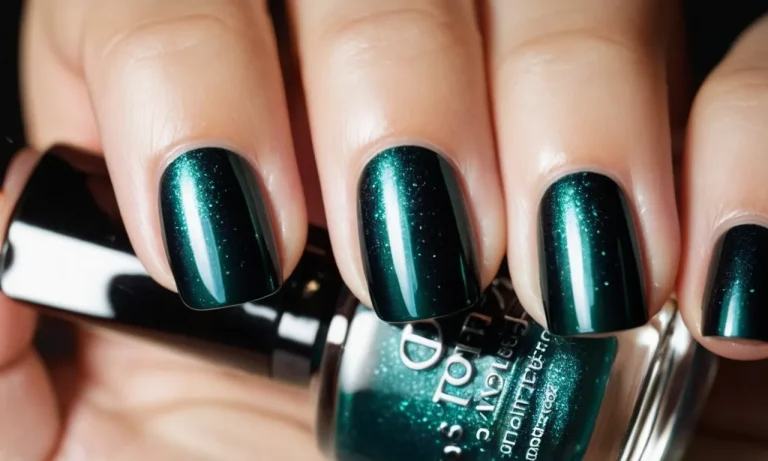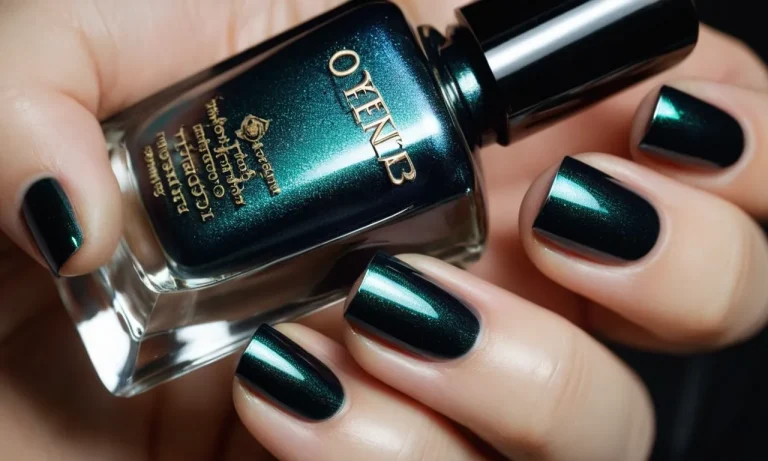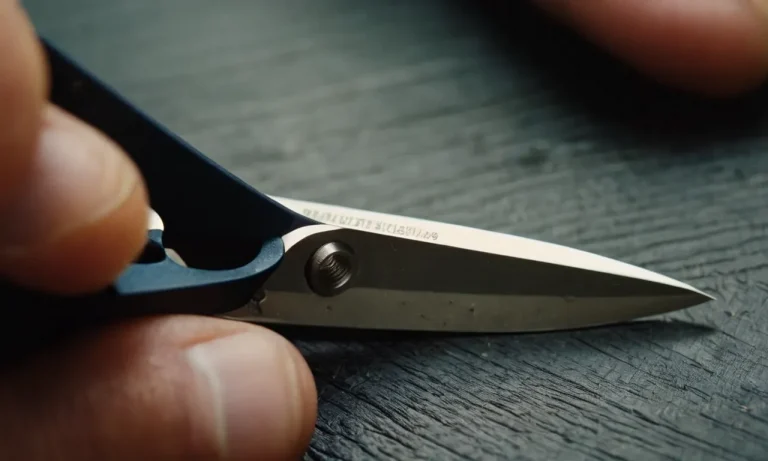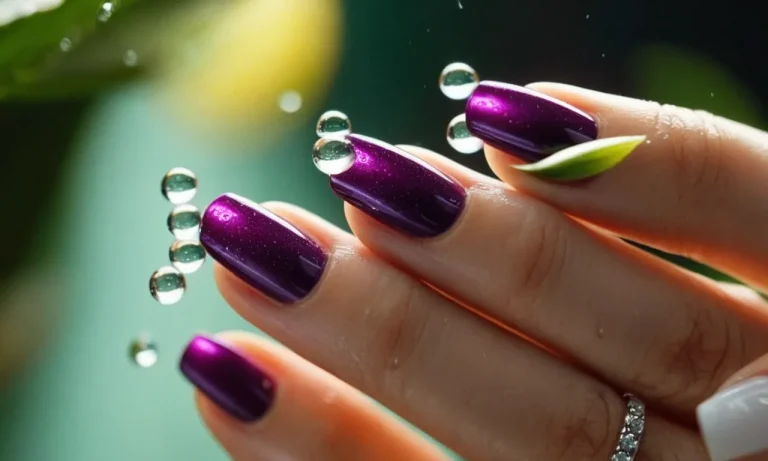How To Protect Your Nails While Showering
If you love having beautifully manicured nails, dealing with the drying effects of daily showers can be frustrating. Warm water, harsh soaps, and scrubbing can all cause nails to become brittle and thin over time.
But protecting your manicure in the shower doesn’t have to be complicated or time-consuming. In fact, with just a few simple habits and products, you can emerge from the shower with nails that look as gorgeous as when you entered.
If you’re short on time, here’s the key to keeping your nails looking great post-shower: Apply a layer of jojoba oil or thick moisturizer before hopping in, and slip on rubber gloves while you wash.
Limit Your Time in the Shower
Take 5-10 Minute Showers
Taking shorter showers is one of the best ways to protect your nails while bathing. Most experts recommend limiting your shower time to 5-10 minutes. This helps reduce the amount of water and cleansing agents your nails are exposed to.
Long hot showers, often 20 minutes or more, can do a lot of damage. The constant water exposure slowly weakens and strips away layers of the nail plate. Over time, this makes nails thin, brittle and more prone to cracking and peeling.
By scaling back to quick 5-10 minute showers, you allow less water to reach your nails. Shorter showers also limit the effects of hot water, which can be particularly drying and damaging to the natural oils in nails.
Avoid Excessively Hot Water
In addition to shower length, the temperature of the water also impacts nail health. Very hot water can steadily cause nails to become dry and fragile.
Try to keep your shower and sink water lukewarm, not scalding hot. The ideal temperature is around 90-100°F. This helps lock in moisture and prevents the hot water from sapping away the nails’ natural oils.
You can make a minor adjustment to your hot water heater dip tube. This will regulate the maximum temperature so hot water doesn’t reach painfully hot levels at the shower head or faucet.
Also, consider investing in a digital shower head that displays the temperature. This takes the guesswork out and allows you to precisely control the ideal warm water setting.
Moisturize Before and After
Apply oil or thick cream pre-shower
Applying an oil or thick cream to your nails and cuticles before showering can help create a protective barrier against water damage. Oils like olive, coconut, or argan are great options that penetrate deeply to moisturize nails.
Look for a thick cream or balm formulated specifically for cuticles that contains moisturizing ingredients like shea butter or vitamin E. Gently massage the oil or cream into your nails and cuticles for 30 seconds to allow absorption before hopping in the shower.
Re-moisturize immediately after
It’s crucial to rehydrate your nails and cuticles immediately after showering before the water has a chance to evaporate. Have your moisturizer ready by the sink and gently pat your nails and cuticles dry.
Apply a hydrating cuticle oil, thick cuticle cream, or moisturizing hand lotion while the nail bed is still slightly damp. This helps seal in moisture and prevents the drying effects of the water. Continue to massage the moisturizer into the nails and cuticles for 30 seconds after each shower.
Use moisturizing nail treatments weekly
Using dedicated nail and cuticle treatments weekly helps strengthen nails and keep cuticles healthy. Look for moisturizing products formulated with nourishing oils, butters, ceramides, glycerin, and hyaluronic acid.
For extra moisture, apply the treatment and then cover nails with cotton gloves for 10-15 minutes to allow deeper absorption. Some great options are cuticle softening treatments, hydrating nail masks, or moisturizing cuticle serums.
Consistently using these treatments seals in moisture and prevents the nails from becoming dry and brittle from frequent water exposure during showering.
Protect Your Nails While Washing
Wear rubber gloves
Wearing rubber gloves while washing dishes or cleaning can help prevent your nails from excessive exposure to water and cleaning agents (Healthline). The rubber barrier helps shield your nails and cuticles from soaking up too much moisture, which can lead to breakage, peeling, and fungal infections.
Choose a pair that fits snugly to really protect those precious nails!
Use moisturizing soaps
Rather than harsh soaps and detergents which strip nails of natural oils, opt for moisturizing hand soaps containing ingredients like shea butter, vitamin E, and essential oils (Allure). The nourishing formula helps counteract dryness from frequent handwashing and offers nails some extra hydration.
Even just replacing your regular soap once or twice a week produces an amazing difference – your nails will be smoother, shinier, and far less likely to chip and crack.
Avoid abrasive scuffs and scrubs
Be gentle with your nails to avoid abrasions that allow water to seep in and cause damage. Limit using scouring powders, sponges with a rough texture, stiff scrub brushes etc. Instead, opt for soft dish clothes, microfiber cloths, or soft natural sponges (😍 Three Little Snooks).
When possible, clean delicate glassware and stemware by hand to avoid clinking that can chip nails. Pay special attention to the vulnerable free edge and sidewalls. A few preventative habits will save you a lot of heartache!
Strengthen Nails Against Breakage
Take biotin supplements
Biotin, also known as vitamin B7 or vitamin H, has been shown in studies to help strengthen brittle nails when taken as a daily supplement. Biotin helps produce keratin, a protein that is an essential building block for hair and nails.
One study found that taking 2.5 mg of biotin per day for 6 months increased nail plate thickness by 25% on average (source). Another study demonstrated that women taking biotin supplements had firmer, harder nails that were less likely to split and break (source).
Most biotin supplements are safe, affordable, and easy to find in pharmacies or health food stores.
Use strengthening nail polish
Using a strengthening nail polish, also called a fortifying nail polish, can help shield nails from damage. These polishes work by including ingredients like nylon fibers, silk fibers, or calcium that reinforce nails and act as an extra protective layer on top.
Studies have found that strengthening polishes increase nail hardness and resistance to breakage when worn consistently (source). Some popular strengthening polish brands to try are OPI Nail Envy, Essie Grow Stronger, and Sally Hansen Hard as Nails.
Apply nail hardeners regularly
Nail hardeners are topical treatments applied directly onto the nails to help harden and reinforce them. Many commercial nail hardeners contain active ingredients like formaldehyde, ethyl methacrylate (EMA), or dimethyl urea, which can effectively cross-link nail proteins to create a tougher nail plate.
Studies have confirmed using nail hardeners reduces the amount of softening and cracking over time (source). For best results, apply a thin layer onto clean nails daily. Some popular options are Sally Hansen Hard as Nails Hardener and Essie Here to Stay Base Coat.
Consistently practicing all three tips – taking biotin, using strengthening polish, and applying hardeners – provides multiple reinforcing mechanisms to keep nails hard and crack-free. Having strong, healthy nails helps prevent painful breaks and discomfort while showering or washing dishes.
Conclusion
While it can be hard to avoid exposure to water when showering daily, implementing some simple nail care habits can help you protect your manicure. Limit your time under hot water, generously moisturize before and after, and take additional steps like wearing gloves and using strengthening products.
With this comprehensive nail care regimen, you’ll be able to rock beautiful, healthy nails around the clock.

